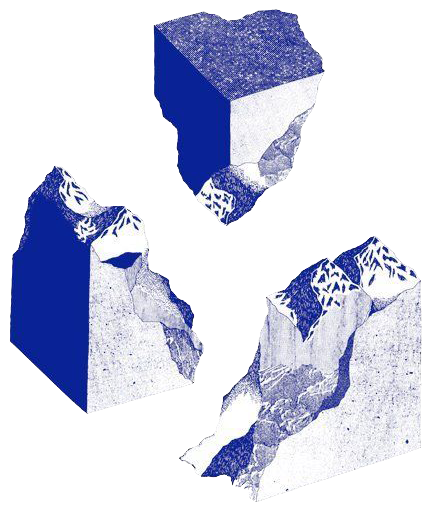Conveyance is the art or science of transferring legal property or changing one’s interest in property through the use of a (written) document. As a result, the process, the legal title, and the transfer or modifications are the three critical pillars of conveyancing (Gitonga, 2021).
Definition of Terms
- Real Property: Land and other assets that are permanently attached to the land and all of the rights of ownership, including the right to possess, sell, lease, and enjoy the land are referred to as real property. These additional assets must be permanently installed on or beneath the land. It includes: buildings, railroad tracks, canals, fences and machinery among others
- Real Estate: Land on, above or below the earth’s surface that includes all things permanently attached to it.
- Personal Property: properties made up of movable assets are categorized as personal property. E.g, The furniture in a house, for example, is personal property, whereas the house itself is real property
Estates in Real Property
There are two types of estate in real property: freehold estate and leasehold estate.
A freehold estate is an estate in which the interest in land has no time limit and is also distinguished by land ownership. A leasehold estate refers to the exclusive right of a tenant to occupy a property for a period of time. A written lease agreement is concluded between the owner, who is the lessor, and the tenant, the lessee.
Under freehold estate, two sub-entities exist which include: fee simple and life estate.
There are four types of leasehold estate: tenancy for years, period tenancy, tenancy at will and tenancy at sufferance.
Parties involved in Real Property Conveyancing:
- The legal entities such as the government.
- The offices responsible for such are the Ministry of Land and its subsidiary office.
- The property owner.
- An advocate of the high court.
- The buyer.
- The conveyancing consultant.
- The county land control board and the land registrar are all involved in the conveyancing process.
Stages in disposition of an interest in Land
- Interest in land refers to any ownership or possessory right with respect to real property, including ownership in fee, an easement, a leasehold, and any subsurface or mineral rights.
- Stages in the disposition of land occur in two phases:
- contract for sale.
- conveyance phase.
- Under the contract of sale phase:
- Client interviews are conducted.
- Titles are investigated.
- Pre-contract inquiries are done.
- Requisitions are asked (issues arising from the title document).
- A certificate of rate clearance is issued.
- Execution.
- Verification is all under a contract of sale.
Conveyance Phase
This is the stage at which a land interest is transferred. It is only effective upon registration. It is important to note that the land sale contract does not confer any interest in the land. Its main purpose is to bind parties to the agreement (Africa Law Centre, 2018)
Conveyancing is not complete until registration is completed. The keeping of records of land transactions in the Lands Register is known as registration. It entails the registration of both the title and the interest. What is usually registered is the title or ownership of land, as well as any instrument dealing with land or disposing of it (Kilonzo, 2019). The following are the reasons for registering:
- Allowing the government to keep track of users and collect revenue more easily.
- simplifying land registration transactions and providing certainty and security of title or tenure.
- Reduction of unnecessary litigation in land-related matters.
- Allows for simple land transactions.
Registration Process
- Filled Valuation Forms lodged with the Collector of Stamp Duty for purposes of valuation. Requisition Form filled by the Collector and sent to Chief Government Valuer for valuation. This is only applicable where the document is a transfer or Deed of Conveyance.
- Document stamped and duty paid at the Banks (KCB/NBK), these are then lodged for registration.
- Document presented in duplicate together with all relevant requisite documents e.g. original of the government‘s valuation report, consent, clearance certificate, original title, etc. Fill out the application for registration in quadruplicate.
- Upon presentation of the document, a day book number is given entered into a register and the date and time of presentation endorsed on the document for purposes of priority.
- Audited by the Government Auditor and ascertainity of stamp/duty, taxes, rent and rates payment.
- Left for matching with the Deed or Parcel files
- Registration proper commences with the Registry- in charge of marking the documents for action in a register known as the ‘A‘ book
- First, verification of document by an officer in the registry: detection of any defects
- Second, inspection of the title by an officer to ensure the title is clear and registration can proceed
- Third, Entry of particulars of interest being acquired
- The document is then passed to the relevant Registrar for execution and ultimate registration. The registrar vets it again and then signs in approval or rejection with reasons
Conveyance in Relation to Business
Business Conveyancing is the legal transfer of business ownership from one person to another.
A lawyer must be present for approval of the contract.
There are three steps to follow, which are explained below:
- Pre-Contract Settlement. Before anything official is signed and written, the buyer and seller of the business owners discuss the terms and conditions. After everything is discussed, they have to be officially written in a contract. Any revisions made during the drafting of the contract are to be included in the final contract.
- Settling the Contract. Settlement is when parties complete this transaction. During this time, parties must read the sale of business agreement to determine what the parties will transfer to each other. The contract will often include a ‘completion date’ (i.e. the date parties work towards to make settlement happen.
Performing The Sale of Agreement
- Financial information: All the financial information relating to the business’ turnover, expenses and profitability (or goodwill) should be carefully reviewed in conjunction with appropriate business advice; particularly by the buyers.
- Plant and equipment: A list of assets (or plant and equipment) to be sold with the business should be clearly specified and usually should be confirmed by way of the seller’s depreciation schedule of those assets at the “written down value”. The seller should advise, and the buyer should be aware to determine which business assets are actually:
- Owned by the seller; or
- Subject to a lease or other secured finance arrangements (such as hire purchase or business loan).
- Therefore the buyer must check if it is a company, whether there are any encumbrances such as registered “charges” (i.e. debentures) over the seller company, whether fixed or fixed and floating.
- Intellectual property: If the business relies on any form of valuable intellectual property; such as trademarks, patents designs etc. Ensure these are properly registered,
- Employees: Ensure that a detailed list of the business’s employees is provided by the seller. This list should set out their names, age, position/job description, whether they are full-time, part-time or casual, starting date and current wage. Importantly the business and employees’ formal employment agreements or arrangements should be carefully reviewed to determine whether they comply with any applicable laws.
- Key persons: Ensure that any key person(s) employment agreements are in place and any Key Performance Indicators (“KPIs”) are agreed. The seller should also make sure that the lessor/ franchisor/licensor/supplier provides their prior written consent or indicative approval. Commonly, franchisors have a first right of refusal to acquire the seller franchisee’s business before they can sell to a third-party buyer.
- Adjustment of purchase price.
- Clawback clauses: If the business’ financial earnings cannot be fully or properly determined for a period of time, then either a portion of the purchase price should be held in trust (i.e. a retained sum) to be payable subject to the buyer meeting an agreed net income value of an agreed period e.g. 6 months, 1 year, 18 months and with an agreed formula to adjust up or down based on whether the seller’s represented net income is achieved. It is effected by a condition that the seller will continue to work in the business after settlement, either as an employee or a consultant for an agreed period to ensure appropriate ‘client transition’
- Payment Plan: The last thing to consider is the quoted price and the proposed payment plan. Once the contract is signed and settled, the buyer can now transition to the new business owner. The former owner has to show them around the facilities, grant them access to the things they need to steer the ship and provide copies of the signed contract.
Applicable Laws
- The Law of Contract Act.
- The Land Registration Act 2012.
- Conveyancing and Law of Property Act.
Business conveyancing is necessary to hand over the opportunity you’ve cultivated to capable hands. While the business might no longer be in your name, you could maintain your legacy by passing on the torch.





